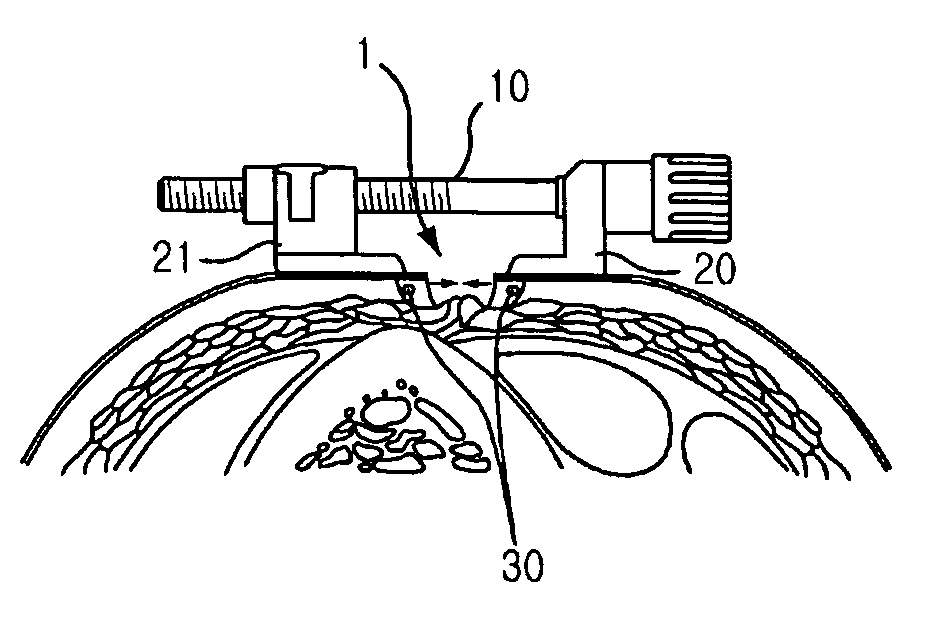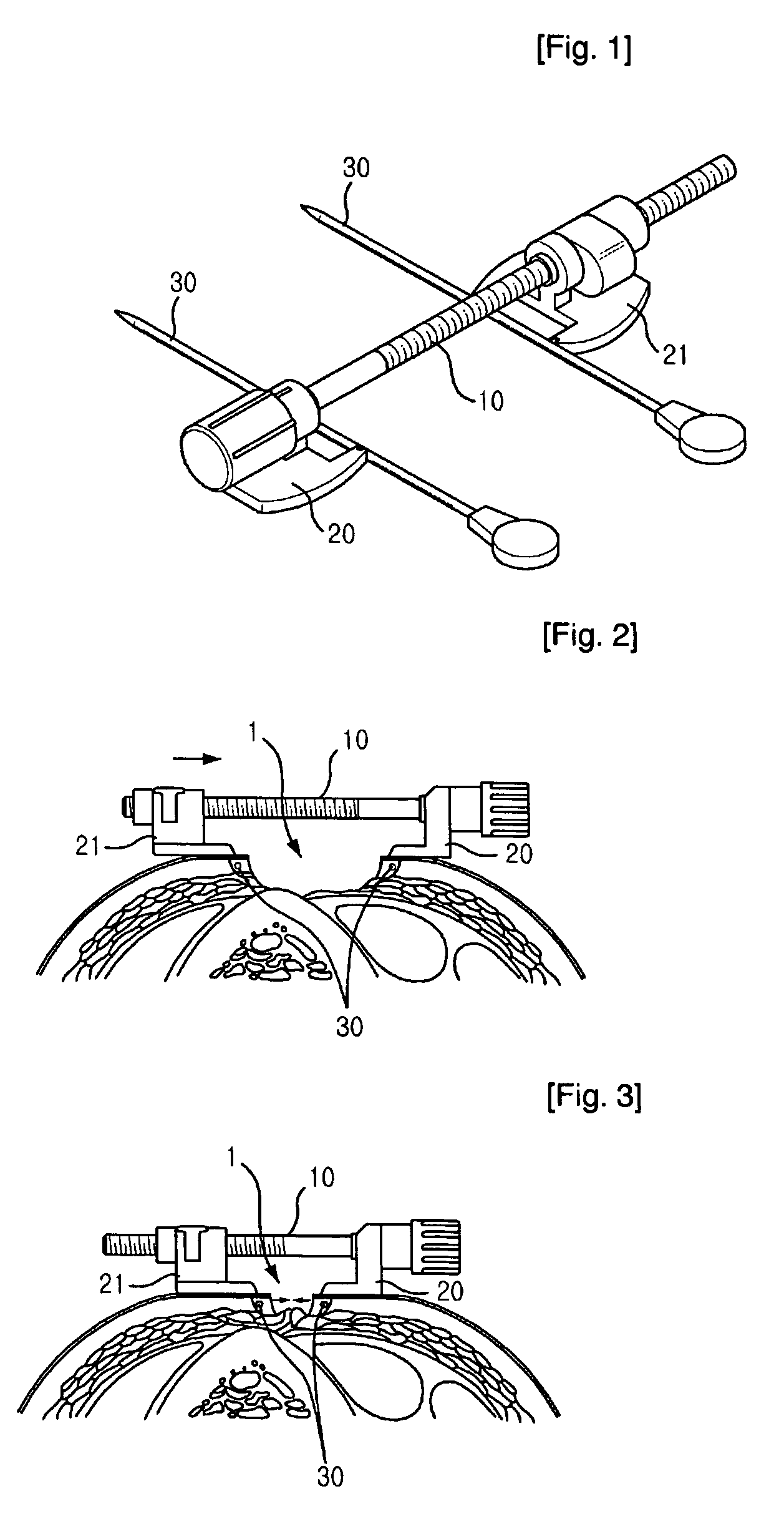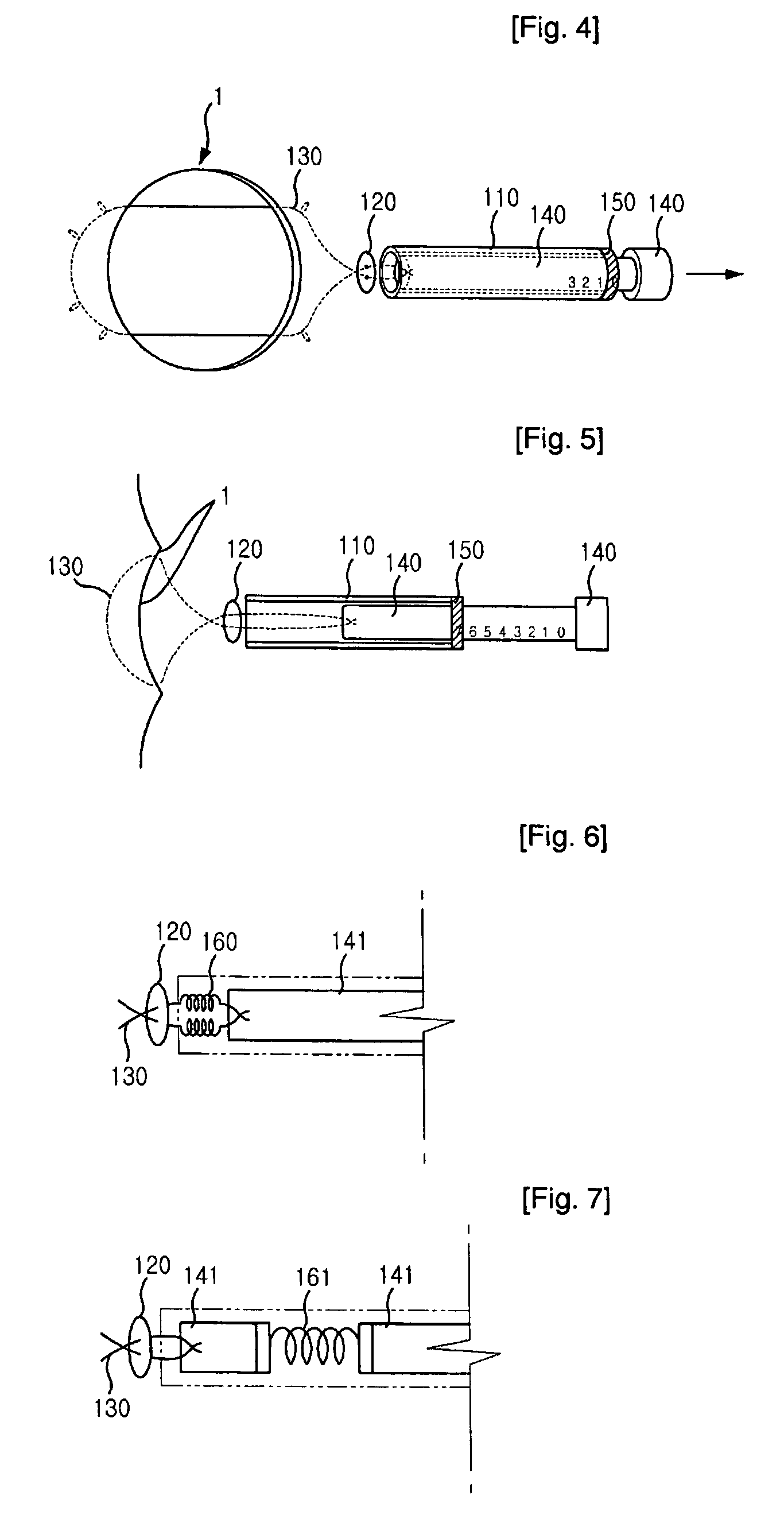Wound Closure Assisting and Maintaining Apparatus
a technology for applied in the field of wound closure assisting and maintaining equipment, can solve the problems of easy disruption of wounds, inability to securely suture wounds at one time, and death of skin around the wound, so as to improve the feeling and compliance of patients, shorten the length of the device, and improve the effect of comfor
- Summary
- Abstract
- Description
- Claims
- Application Information
AI Technical Summary
Benefits of technology
Problems solved by technology
Method used
Image
Examples
Embodiment Construction
[0037]Hereinafter, a wound closure assisting and maintaining apparatus in accordance with a preferred embodiment of the present invention will be described in detail with reference to the accompanying drawings.
[0038]FIGS. 4 and 5 are plane views describing a wound closure assisting and maintaining apparatus in accordance with an embodiment of the present invention.
[0039]Referring to FIGS. 4 and 5, the wound closure assisting and maintaining apparatus includes: a loop suture 130, a tightening member 120, a pulling member 140, a housing member 110, and a locking member 150.
[0040]The loop suture 130 is threaded circularly through skin on both side of the wide open wound. Two ends of the loop suture 130 are tied to the pulling member 140 after passing out of skin and through the tightening member 120. The tightening member is a round flat disc with two holes. Each end of the loop suture 130 is passed through the corresponding hole to be tied and secured to one end of the pulling member ...
PUM
 Login to View More
Login to View More Abstract
Description
Claims
Application Information
 Login to View More
Login to View More - R&D
- Intellectual Property
- Life Sciences
- Materials
- Tech Scout
- Unparalleled Data Quality
- Higher Quality Content
- 60% Fewer Hallucinations
Browse by: Latest US Patents, China's latest patents, Technical Efficacy Thesaurus, Application Domain, Technology Topic, Popular Technical Reports.
© 2025 PatSnap. All rights reserved.Legal|Privacy policy|Modern Slavery Act Transparency Statement|Sitemap|About US| Contact US: help@patsnap.com



